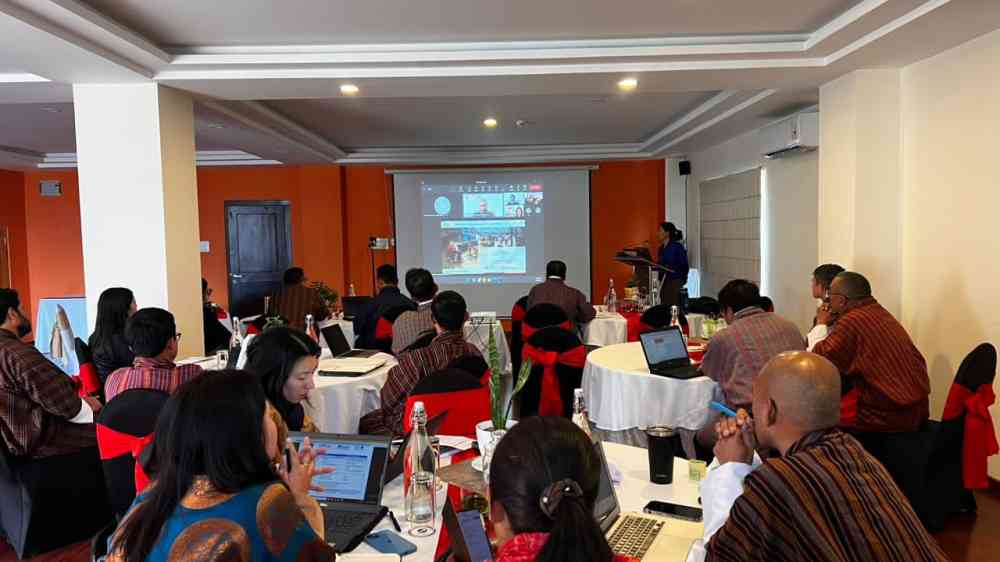Bhutan is protecting its vital infrastructure systems by strengthening resilience to disasters

Fourteen agencies working in the critical infrastructure sectors in Bhutan met with a shared commitment to strengthen infrastructure resilience through the project entitled 'Resilience of infrastructure through enhanced governance'.
Bhutan faces escalating challenges from natural and human-made hazards, including earthquakes, floods, landslides, glacial lake outburst floods and forest fires. The country’s vulnerability to these threats is compounded by an increasingly complex disaster risk landscape driven by climate change. This places a growing number of people, assets, and livelihoods at compounded risk and generates potential cascading impacts on diverse segments of Bhutanese society.
To address these risks, a team of experts from project partners – the Coalition of Disaster Resilient Infrastructure (CDRI) and the United Nations Office for Disaster Risk Reduction (UNDRR) - joined the meeting, which was jointly organized by the Department of Local Governance and Disaster Management of the Ministry of Home Affairs in Bhutan and the United Nations Satellite Center (UNOSAT) from the United Nations Institute for Training and Research (UNITAR).
This first official meeting of experts and stakeholders under this project provided a platform to foster a shared vision for infrastructure resilience and a collaborative approach to address the pressing challenges posed by natural hazards and climate change.
Recognizing the need for adequate policy and regulation frameworks for disaster risk reduction in the critical infrastructure sectors, the project’s core objective is to embed resilience in decision-making and investments. The project is expected to increase awareness and understanding of infrastructure resilience, while also strengthening national capacity for risk-informed and inclusive infrastructure policy and planning.
In his address to the meeting participants, the Chief of the Disaster Prevention and Mitigation Division of DLGDM, Ministry of Home Affairs summed up the significance of such a project by saying that “the DLGDM is gearing towards ensuring that the critical infrastructures are protected and are disaster resilient, as well as ensuring that our vital systems can withstand the test of time and disaster events”.